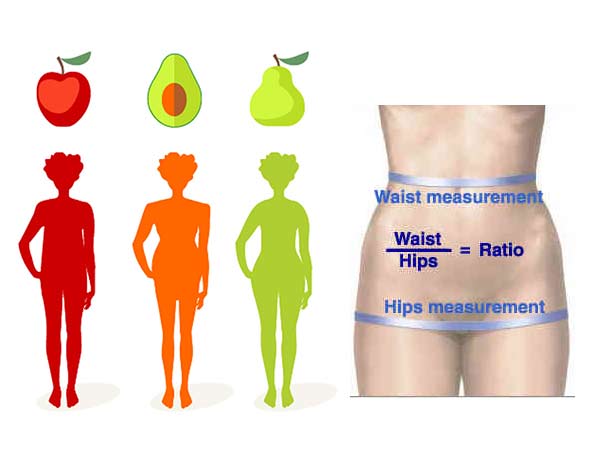Higher waist and hip measures may add up to greater risk for heart attack among women
Higher waist and hip size are more strongly associated with heart attack risk than overall obesity, especially among women, according to research in Journal of the American Heart Association, the Open Access Journal of the American Heart Association/American Stroke Association.
 In a study of nearly 500,000 adults (aged 40-69) from the United Kingdom, researchers found that while general obesity and obesity specifically around the abdomen each have profound harmful effects on heart attack risk in both sexes, women were more negatively impacted by higher waist circumference and waist-to-hip ratio than men.
In a study of nearly 500,000 adults (aged 40-69) from the United Kingdom, researchers found that while general obesity and obesity specifically around the abdomen each have profound harmful effects on heart attack risk in both sexes, women were more negatively impacted by higher waist circumference and waist-to-hip ratio than men.
This study suggests that the differences in the quantity and distribution of fat tissue not only results in differences in body shape between women and men, but may also have differential implications for the risk of heart attack in later life, researchers noted.
“Our findings support the notion that having proportionally more fat around the abdomen (a characteristic of the apple shape) appears to be more hazardous than more visceral fat which is generally stored around the hips (i.e., the pear shape),” said lead author Sanne Peters, Ph.D., Research Fellow in Epidemiology at the George Institute for Global Health at the University of Oxford in the United Kingdom.
Additional research on sex differences in obesity may yield insights into the biological mechanisms and could inform sex-specific interventions to treat and halt the obesity epidemic.
According to statistics in the AHA’s 2018 Statistical Update, 40 percent of American women age 20 and older and 35 percent of men were considered obese in 2013-14 national surveys. Being obese puts you at a higher risk for health problems such as heart disease, stroke, high blood pressure, diabetes and certain cancers.
Source: American Heart Association
Full bibliographic information:
Sex differences in the association between measures of general and central adiposity and the risk of myocardial infarction: results from the UK Biobank

